
What is Sashimi? Guide and Best Fish to Try
Sashimi (刺身) is one of Japan’s most beloved culinary delicacies, offering a pure, unadulterated taste of raw fish and seafood. Served in delicate slices, sashimi emphasizes freshness, quality, and the natural flavors of each ingredient. Unlike sushi, which is served with rice, sashimi is presented on its own or with simple garnishes, allowing each bite to capture the full essence of the fish.
This guide delves into the history and art of sashimi, introduces the best types of fish to try, and provides tips on how to fully appreciate this iconic Japanese dish.
1. What is Sashimi?
Sashimi is a traditional Japanese dish of raw fish or seafood that is carefully sliced and served fresh. The word "sashimi" literally means "pierced body," a name believed to refer to the traditional preparation and presentation style. Unlike sushi, sashimi is purely about the fish and is typically served without rice. Instead, it’s often accompanied by garnishes such as grated wasabi, daikon radish, and shiso leaves, which complement the flavor and provide textural contrast.
The quality of sashimi depends heavily on the freshness and texture of the fish, with chefs skillfully slicing each piece to enhance its natural flavors and mouthfeel. Often served with soy sauce for dipping, sashimi offers a subtle, rich taste experience that showcases the essence of the sea.
2. History and Cultural Significance
Sashimi’s roots trace back over a thousand years, with records indicating that Japanese aristocrats enjoyed raw fish as early as the Heian period. Initially, the practice of eating raw fish was limited to coastal regions where fresh fish was abundant. Over time, the popularity of sashimi spread across Japan as preservation techniques, such as cooling and salt-curing, improved, making it possible to transport fish to distant areas.
Today, sashimi is enjoyed throughout Japan and the world as a high-quality dish that celebrates Japanese culinary artistry and respect for natural ingredients. Sashimi holds a special place in Japanese culture, often served at celebrations and ceremonies, symbolizing purity and freshness. Eating sashimi also follows a specific etiquette, adding to the formality and appreciation of the dish.
3. Best Fish for Sashimi
While many types of fish and seafood can be enjoyed as sashimi, some varieties stand out for their flavor, texture, and popularity in Japanese cuisine. Here are some of the best fish to try when experiencing sashimi:
- Tuna (Maguro): Tuna is one of the most popular types of sashimi, known for its rich flavor and smooth texture. Different cuts of tuna offer distinct tastes, with *akami* (lean meat) being light and refreshing, while *otoro* (fatty tuna) is highly prized for its melt-in-the-mouth quality.
- Salmon (Sake): Salmon sashimi has a buttery texture and a mild, slightly sweet flavor. Often enjoyed for its vibrant color and tenderness, salmon is a favorite among both Japanese and international diners.
- Yellowtail (Hamachi): Yellowtail offers a firm texture with a balanced, rich taste. Its smooth, clean flavor makes it a common choice in sashimi, especially during the winter when the fish is at its peak.
- Sea Bream (Tai): Sea bream is prized for its mild flavor and subtle sweetness, often associated with celebration and good fortune in Japan. It’s a delicate option that pairs beautifully with wasabi and soy sauce.
- Horse Mackerel (Aji): Horse mackerel sashimi has a slightly firmer texture and a bolder taste, providing a more intense flavor profile. Known for its freshness, it’s usually served with ginger and scallions for added zest.
- Scallop (Hotate): Scallop sashimi is smooth, sweet, and tender. Often enjoyed for its creamy texture, scallop is a popular choice for those who enjoy seafood with a mild, delicate flavor.
- Squid (Ika): Squid sashimi has a unique, chewy texture and a subtly sweet taste. Its simplicity and mild flavor make it an excellent complement to soy sauce and wasabi.
4. How to Enjoy Sashimi: Tips for Beginners
Experiencing sashimi for the first time can be both exciting and slightly intimidating. Here are some tips to fully enjoy this unique Japanese delicacy:
- Start with Milder Flavors: If you’re new to sashimi, start with milder varieties like salmon or sea bream before moving on to stronger flavors like horse mackerel or squid.
- Try it Fresh: Sashimi should be eaten fresh to fully appreciate its flavor and texture. Make sure to enjoy it as soon as it’s served.
- Use Wasabi Sparingly: Wasabi is traditionally paired with sashimi to enhance the flavor and add a touch of heat, but it should be used sparingly. A small amount on the fish adds a nice kick without overpowering the natural taste.
- Dipping Technique: Dip only the fish side of the sashimi into soy sauce, avoiding over-soaking the piece. This technique prevents the soy sauce from overwhelming the taste of the fish.
- Cleanse Your Palate: Between different types of fish, use a small piece of pickled ginger (gari) to cleanse your palate. This practice allows you to fully enjoy each flavor without interference from previous tastes.
5. Conclusion: The Art of Sashimi Appreciation
Sashimi is more than just raw fish; it’s a culinary art form that embodies the Japanese appreciation for quality ingredients and refined presentation. Each type of sashimi has its own distinct flavor and texture, offering a unique taste experience with every bite. From the rich, buttery taste of salmon to the delicate sweetness of scallop, sashimi provides a window into Japan’s love for simplicity and elegance in food.
Whether you’re a beginner or an experienced sashimi lover, exploring different types of sashimi offers endless opportunities to discover new flavors and textures. By savoring each piece mindfully, you can gain a deeper understanding and appreciation for this timeless Japanese delicacy.
Share
You may also like
-

Visiting Japan’s Love Hotel Districts: What to Expect
Japan’s love hotel districts are famous for their unique and fascinating blend of privacy, creativity, and a touch of...
-

Top 10 Late-Night Dining Spots in Tokyo’s 24-Hour Cafes
Tokyo’s vibrant nightlife extends well beyond bars and nightclubs, with a thriving late-night dining culture tha...
-

Best Night Tours in Tokyo for After-Dark Adventures
Tokyo’s nightlife is renowned for its energy, vibrancy, and unique blend of traditional and modern experiences. From ...
-

Japan’s Late-Night Food Culture: 8 Best Street Eats
Japan’s late-night food culture is a vibrant experience, especially in bustling cities like Tokyo and Osaka, where de...
-

7 Rooftop Bars in Tokyo for Stunning Views
Tokyo’s rooftop bars offer some of the best ways to soak in the city’s skyline while enjoying drinks, atmosphere, and...
-

10 Best Nightclubs in Tokyo for Dancing and Music Lovers
Tokyo's nightlife is renowned for its variety and energy, with nightclubs that range from high-energy dance floors to...
-

8 Themed Bars and Cafes You Need to Visit in Tokyo
Tokyo is famous for its creative and quirky themed bars and cafes, offering immersive experiences for locals and...
-

Tokyo Nightlife Guide: Shinjuku, Shibuya, and Roppongi Highlights
Tokyo’s nightlife is legendary, offering a mix of vibrant energy, entertainment, and unique experiences in some of it...
-

7 Best Japanese Sake Bars in Tokyo
Tokyo is home to some of Japan’s best sake bars, offering both locals and visitors an opportunity to explore the...
-

Top 6 Observation Decks in Tokyo for Scenic Views
Tokyo’s observation decks offer some of the best panoramic views of the city, giving visitors a chance to see th...
-

Night Cruises in Tokyo: Enjoy the City Views
Tokyo’s skyline is mesmerizing at any time, but experiencing it from the water on a night cruise adds a magical ...
-

Roppongi Art and Nightlife Guide
Roppongi is one of Tokyo’s most vibrant districts, known for its lively nightlife, sophisticated art scene, and ...
-

Nightlife Guide to Shinjuku Kabukicho
Shinjuku’s Kabukicho district, known as Tokyo’s “Sleepless Town,” is the center of nightlife in Tokyo. Renowned ...
-

6 Best Night View Spots in Tokyo
Tokyo at night is a breathtaking spectacle, with illuminated skyscrapers, iconic landmarks, and bustling streets that...
-

Top 12 Sake Breweries in Japan for Tasting and Tours
Japan’s sake culture is celebrated around the world for its depth, complexity, and rich history. Sake, or nihons...
-

How to Enjoy a Night at a Japanese Izakaya
Japanese izakayas are casual, lively spots where locals gather after work to enjoy drinks, share small plates, a...
-

Exploring Karaoke Culture in Japan: 8 Best Places to Sing
Karaoke is an integral part of Japanese culture, offering a fun and entertaining way for friends, family, and even co...
-

5 recommended bars in Golden Gai
Golden Gai, nestled in the heart of Tokyo’s Shinjuku district, is one of the city’s most iconic bar districts. Known ...
-

10 Japanese Gardens You Should Visit for Tranquility
Japanese gardens are renowned for their beauty, tranquility, and intricate designs that reflect harmony with nature. ...
-

Japan’s Kimono Heritage: Symbolism, Style, and Where to See
The kimono, Japan’s traditional garment, is a beautiful and symbolic representation of Japanese culture. From its int...
-
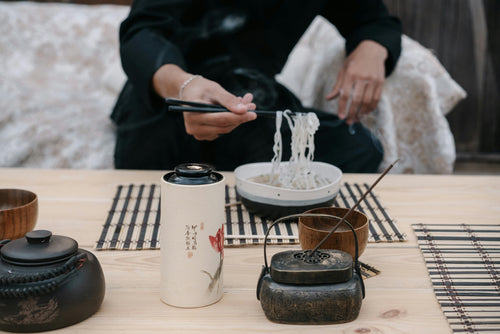
Etiquette Essentials for Visitors to Japan
Japan’s culture is rich in respect, politeness, and consideration, making etiquette an essential part of daily l...
-

7 Best Places to Discover Japan’s Samurai History
Japan’s samurai history is one of honor, skill, and deep cultural influence, stretching back centuries and leaving an...
-

Geisha Culture in Japan: Myths and Realities
The world of geisha, Japan’s skilled performers and keepers of traditional arts, has long intrigued people around th...
-

Japan’s Unique Architecture: Top 8 Traditional and Modern Landmarks
Japan is renowned for its unique blend of ancient architectural heritage and cutting-edge modern designs. From c...
-

10 Traditional Japanese Festivals (Matsuri) You Can’t Miss
Japanese festivals, or *matsuri*, are vibrant celebrations of cultural heritage, featuring elaborate costumes, l...
-

Japan’s Three Great Onsen: A Guide to Famous Hot Springs
Japan is famous for its natural hot springs, or *onsen* (温泉), offering visitors a unique opportunity to relax and rej...
-

Japanese Art Exploration: Best Spots to Enjoy Art in Japan
Japan is a country rich in artistic heritage, from centuries-old traditional crafts to modern, innovative instal...
-

Guide to Japan’s Fireworks Festivals: When and Where to Go
Japan’s summer fireworks festivals, known as "hanabi taikai" (花火大会), are among the most anticipated events in th...
-
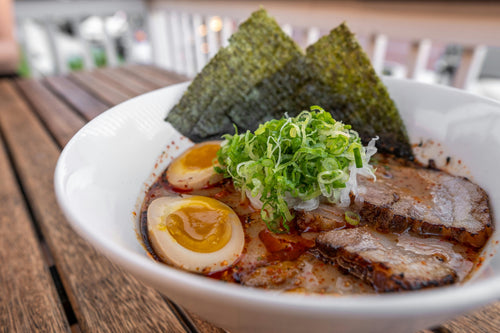
Where to Experience Ramen-Making Classes in Japan
Ramen is one of Japan’s most beloved dishes, with countless regional styles and flavors that attract food lovers from...
-

Power Spot Tours: Japan’s Famous Temples and Shrines
Japan is a land steeped in spiritual history, and visiting its temples and shrines provides not only a glimpse i...
-

UNESCO World Heritage Site Tour Guide in Japan
Japan is home to numerous UNESCO World Heritage Sites, each offering a glimpse into the country’s rich cultural herit...
-

5 Famous Japanese Castles: History and Highlights
Japan is home to some of the most beautiful and historically significant castles in the world. Built during the feuda...
-

10 Unique Drinks to Try from Japanese Vending Machines
Japan is famous for its vending machines, offering an incredible variety of drinks that go beyond just soft drinks an...
-

Tokyo Market Guide: Exploring Tsukiji and Toyosu Markets
Tokyo's Tsukiji and Toyosu Markets are must-visit spots for food lovers and anyone interested in Japan’s rich culinar...
-
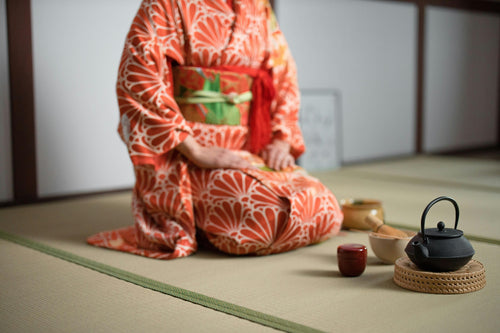
Experiencing Traditional Tea Ceremony in Tokyo
The Japanese tea ceremony, or "chanoyu," is a cultural experience steeped in tradition, aesthetics, and mindfulness....
-
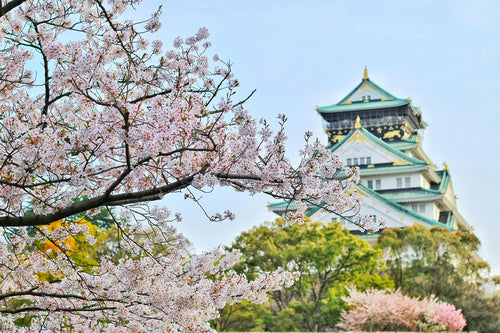
Top 7 Cherry Blossom Viewing Locations in Tokyo
Springtime in Tokyo is synonymous with the cherry blossom season, a breathtaking period when the city’s parks, rivers...
-

What is Onsen? A Guide to History, Benefits, and Etiquette
Onsen, Japan’s cherished hot spring culture, offers a unique blend of relaxation, scenic beauty, and deep-rooted trad...
-

What is Sake? Its Production Method and History
Sake is a traditional Japanese alcoholic beverage made from fermented rice. It has been enjoyed in Japan for over a t...
-

8 hot springs with beautiful scenery near Tokyo
Tokyo is a bustling metropolis, but just outside the city are some of Japan's most serene hot springs, or onsens, off...
-

Top 10 museum to visit in Tokyo
Tokyo is home to a diverse range of museums that cater to all interests, from art and history to technology and pop c...
-

9 Best Hot Spring and Bathhouse in Tokyo
Tokyo is known for its vibrant urban energy, but it's also a fantastic place to relax and rejuvenate in hot springs (...
-
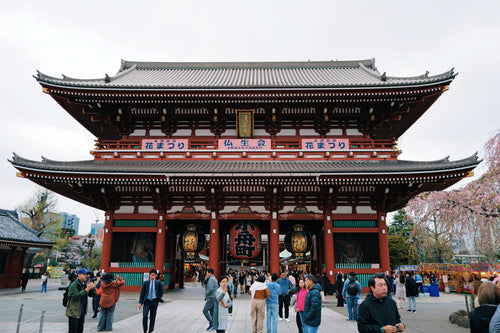
15 Famous Temples and Shrines to Visit near Tokyo
Tokyo and its surrounding areas are home to many famous temples and shrines that showcase Japan's rich spiritual and ...










































